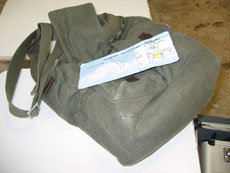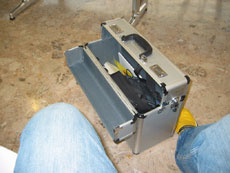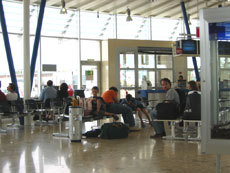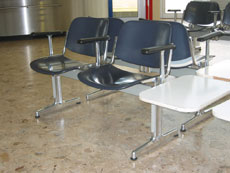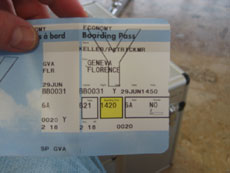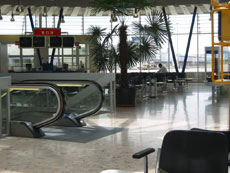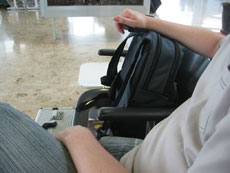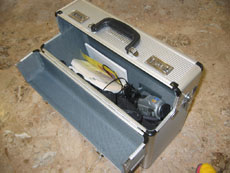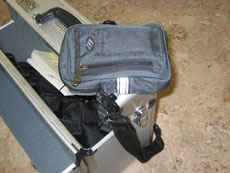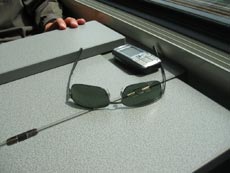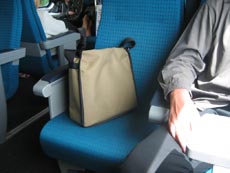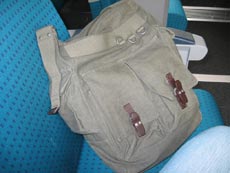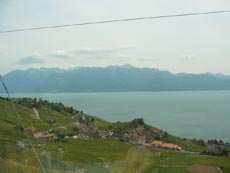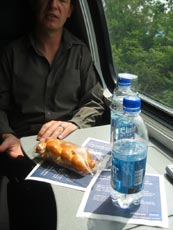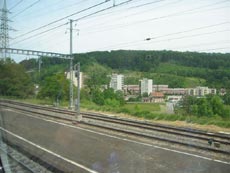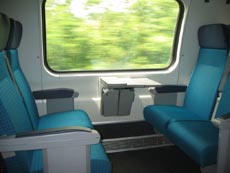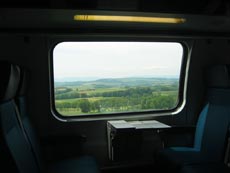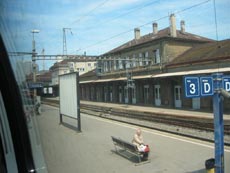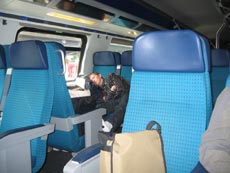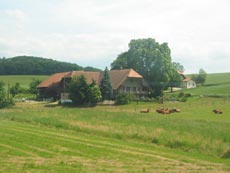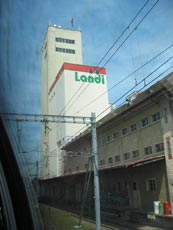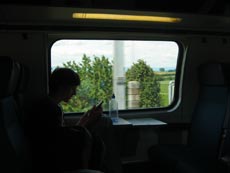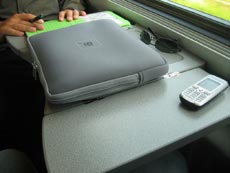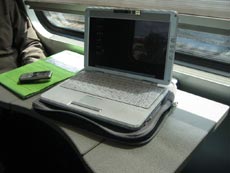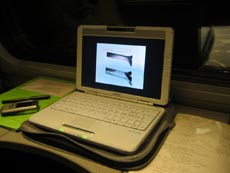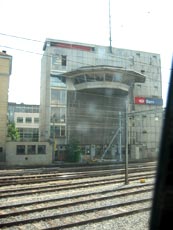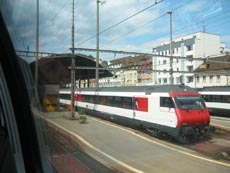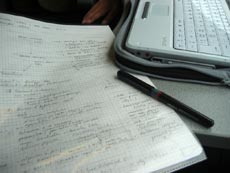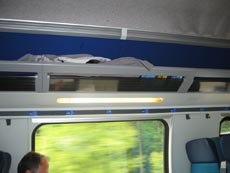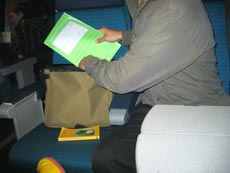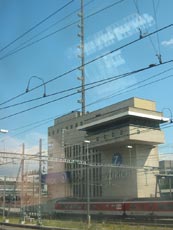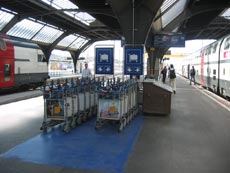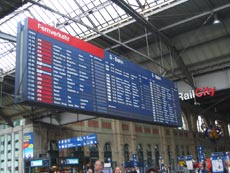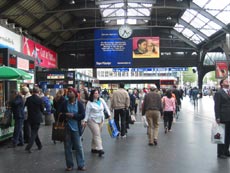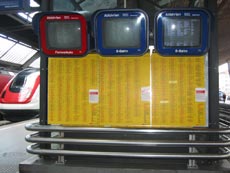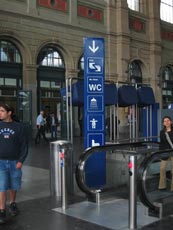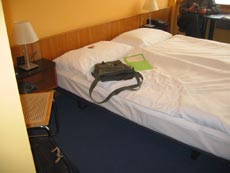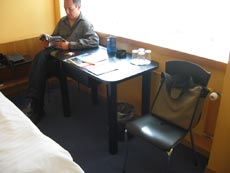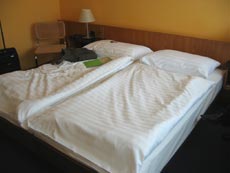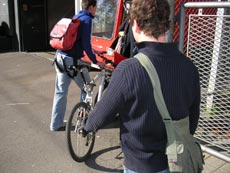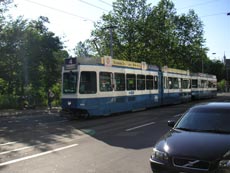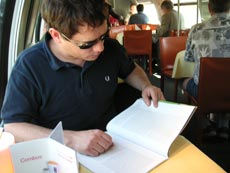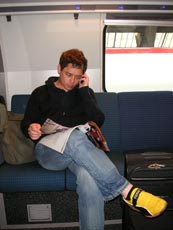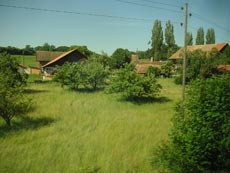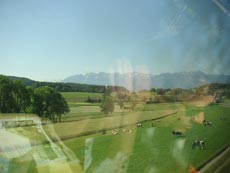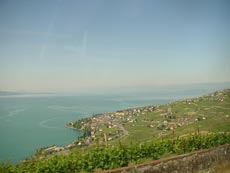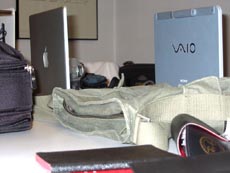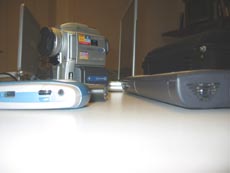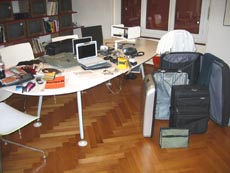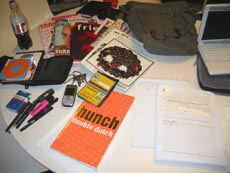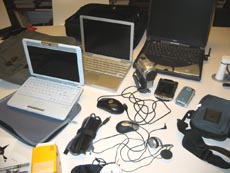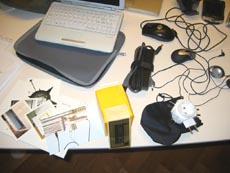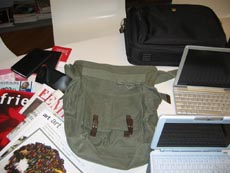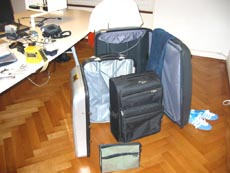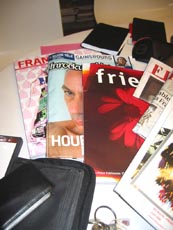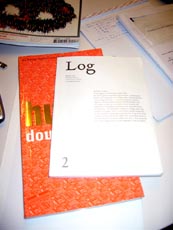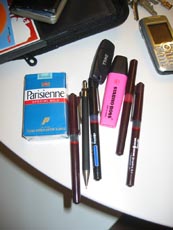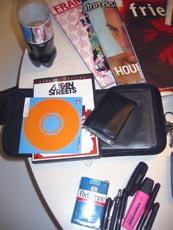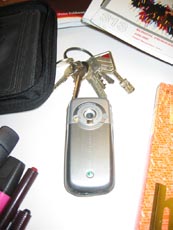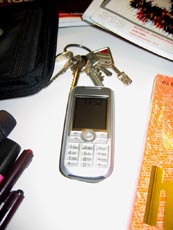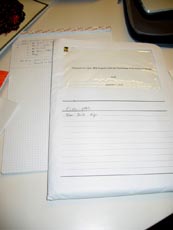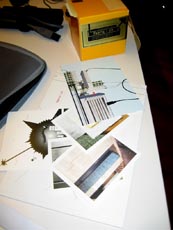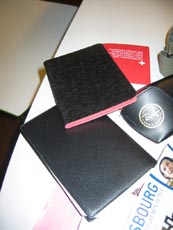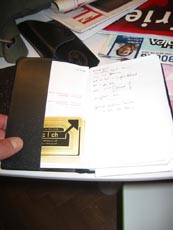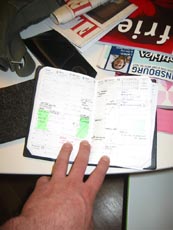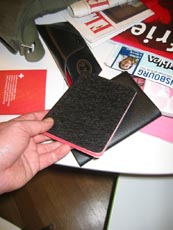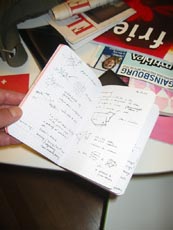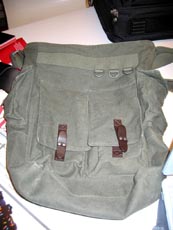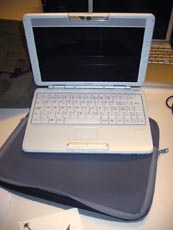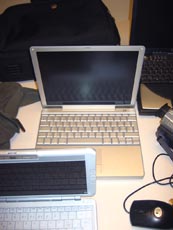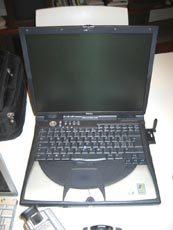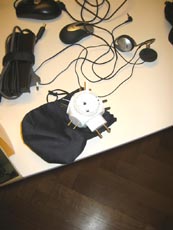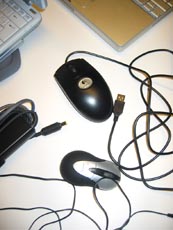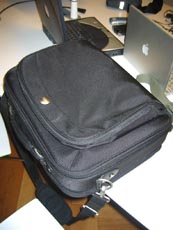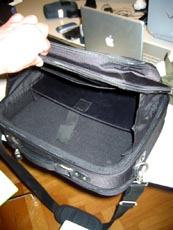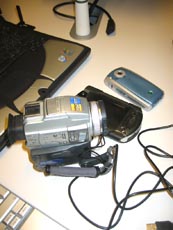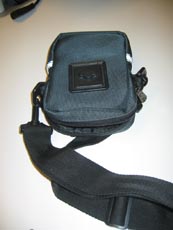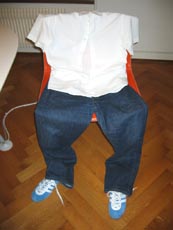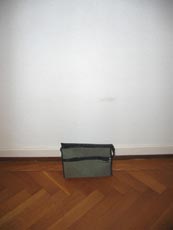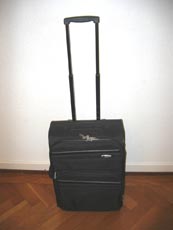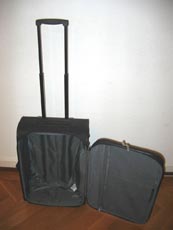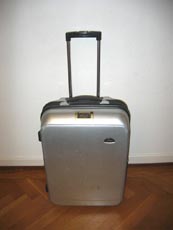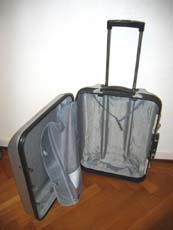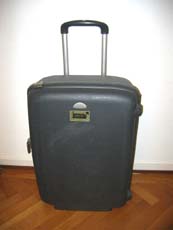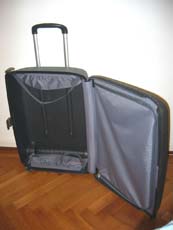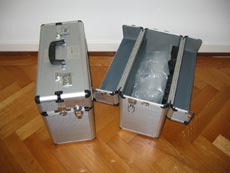Possibilities to geolocate Youtube video into Google Map
After books and books locations being mapped into Google Earth (or trying to...), Google is working on the geo mapping of video content from Youtube.
This excerpt taken from Google Earth Blog: "The brief mention on the new feature in the YouTube blog doesn't tell us anything about what they've planned for this new capability. But, given the ability of Google Maps to show video clips inside placemark descriptions, it can't be that long before they have an ability to show YouTube videos based on location in Google Maps. In fact, I'm sure they are somehow creating KML files associated with the locations of the videos and will be able to show videos tied to a search for a location. There will be even more possibilities when they can have a KML network link to show video locations in either Google Earth or Google Maps. Having an ability to access YouTube videos which are geotagged with an API would be really nice. And, hopefully they will allow people to add location to existing YouTube videos."
Read the full post about it here.
----
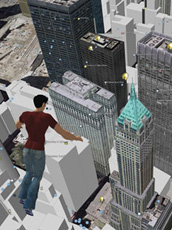
Within this context, I also mention this long article ---Second Earth--- published in the latest MIT Technology review about the potential merging of projects like Google Earth and 2nd life and where they make an analysis of "Mirror worlds" vs "Virtual worlds" vs "Metaverse"! As well as a description of actual technologies or projects that will contribute to the emergence of such parallel worlds.
Posted by patrick keller at 10:18
Cyber carbon footprint
After the "Avatars comsume as much electricity as Brazilians", something about "Cyber warming: PCs produce same CO2 emissions as airlines" says a recent article in The Independent (UK).
-
"(...). Ministers will this week embark on a campaign to curb "cyber-warming" from computers and information technology equipment that now does as much damage to the climate as aircraft emissions.
(...). The two initiatives will mark the biggest official attempt to address some of the environmental consequences of the extraordinarily rapid spread of IT into almost every aspect of daily life. Up to eight million new computers are sold in Britain every year, along with 1.8 million Wi-Fi terminals in the past 18 months.
A government-backed task force is to launch an attempt to reduce what it calls the "cyber carbon footprint" - which threatens to wreck attempts to hit targets for reducing emissions of carbon dioxide, the main cause of global warming - and to encourage the spread of "green" technology.
New research shows that computers generate an estimated 35 million tons of the gas each year - the equivalent of one million typical flights to and from the UK. And Gartner, the international information technology research company, estimates that globally the IT industry accounts for around 2 per cent of carbon dioxide emissions - much the same as aviation. (...)"
Read more about it here.
Another obvious and forseeable exemple of a mish-mash situation: energetic costs of computers, communication and processing power, "cyber carbon footprint".
Ubiquitous computing is probably close to happen (or has it already happened? we can definitely discuss about this), but it sure wouldn't be a luxury to think twice about its energetic counterpart before it happens, so to not contribute to an already outdated universe on a sustainable design point of view, no matter what "sci-fi" it might look like.
Thanks http://del.icio.us/regine for the link to the article of The Independent.
Posted by patrick keller at 14:26
Will we "learn" again from Las Vegas (in Google Earth)?
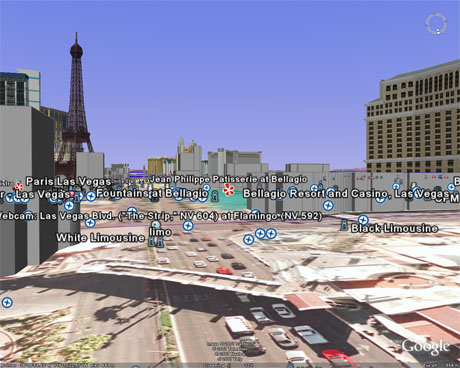
-
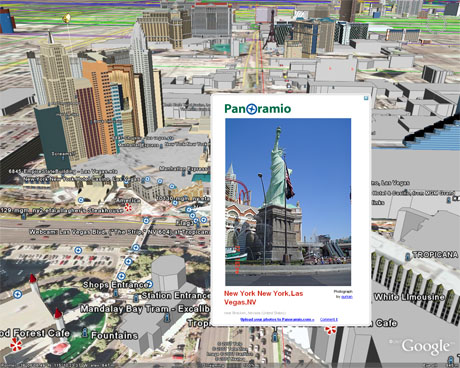
-
The title of this post is of course a bit of a joke, but it is especially a wink to the famous book by Robert Venturi & Denise Scott Brown, Learning from Las Vegas published in 1972.
As I was following with distance some GE blogs, I noticed a few weeks ago a certain quantity of posts announcing new "buildings" with good realistic qualities in "Las Vegas". This sounds like a comment on the real city!
As Las Vegas is mostly already the transposition of existing buildings or monuments into an entertainment city, an "island" in the middle of the "desert", as it is a "faked reality made real", a conditioned space, it has already a lot in common with a "2nd world": the duplication of an existing situation with all the problems we can see in Las Vegas. It hardly generates more than an amusement park for grown up...
So to say and by extension, we could tell that Google Earth is becoming a kind of global Las Vegas (even if it is still not an entertainment park at the moment we write these lines)) but that Las Vegas into Google Earth has the hidden potential to become something much more conceptual, intriguing and complicated: a Las Vegas located both as an island into the desert and into "Global Las Vegas"... An "überpop" city.
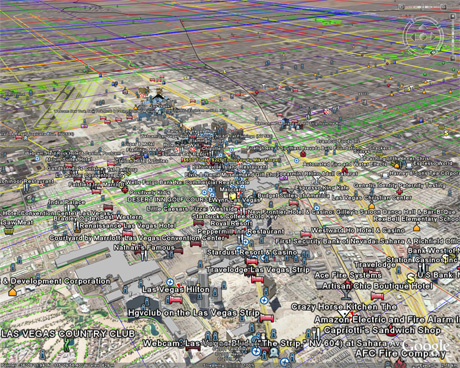
-
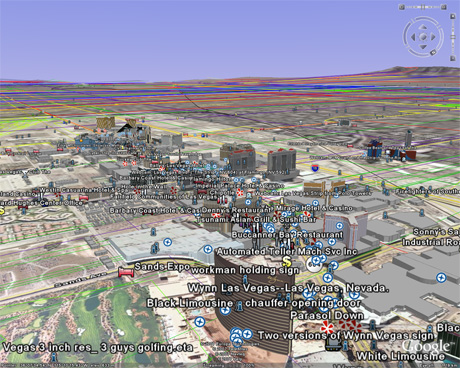
-
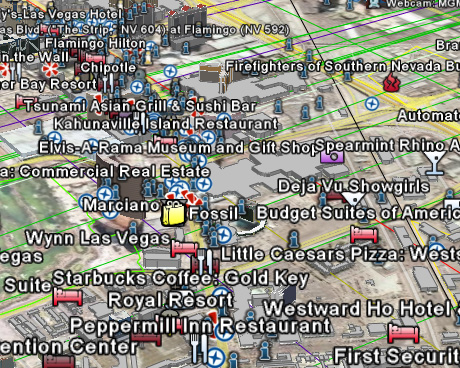
-
It looks now pretty clear to everyone that Google is building a "geo-mapped - search everything from anywhere" system (even locations in books will be mapped) with references potentially working in all directions: from digital to real, real to digital, fiction to real, digital to fiction, real to real, digital to digital, etc.
With Sketchup as a free modeling tool and therefore the possibility for everyone to create new Google Earth layers or objects (as well as any geo web content), Google just need to turn GE into a multi-user / 2nd Life like universe to get a kind of ultimate 2nd world like project and connect everything: get geo-referenced data on you future cellphone, hybridize digital and real life, play with your avatars on the GE layer you want or you just have created, fake your real home, etc.
Those GE images gives a good idea of the complex mediated and layered world we could possibly live in the next decades. This could become the "second learning from Las Vegas": an hybrid fake, highly layered and mediated space, that if it gets combined with powerful visual AR mobile devices/softwares, such as the Nokia MARA one, could produce an instant real-soft city/earth.
You just miss now the concrete building of some Google Earth icons into real Las Vegas, of a Casino-hotel based on a successful ego-shooter game and the mish-mash mapping of everything into everything to get the look of the potential future city. A city where you won't be able to tell what was first, second or third, what is physical or digital, real of fake, etc.
We can now discuss if this is good or bad (I mean, do you really like to eat a deep-dish pizza on the Piazza San Marco in Las Vegas!!?), but the process looks to be on its way...
Posted by patrick keller at 12:46
Mashing books' content with Google Earth & Geodata
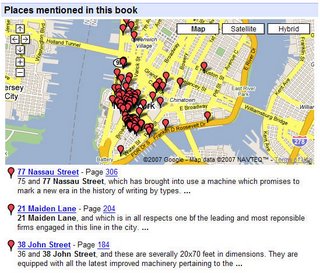
-
Google announced a couple of weeks ago that they wanted to map book's locations into Google Earth. As explained by David Petrou, a software engineer, on Inside Google Book Search blog.
Posted by patrick keller at 14:35
Everyware
Christophe Guignard sent me last november (...) this link to an online retranscription of a discussion between Adam Greenfield and Christina Ray. They talk about "Ubiquitous Computing", more precisely about the book "Everyware: The Dawning Age of Ubiquitous Computing".
As a theme, "ubiquitous computing" is in close relationship with the situation we tried to point out as a starting point of this project back in spring 2005. We then focused on what could be designed within/for such an environment, trying to unfold its hidden potential and eventualy (probably) ending up with problematic objects or environments (webcamera/mirrors and tracking softwares for your home or visual environments and products for camera and softwares), or objects that ask questions, some could be ethical.
Within their discussion, Adam Greenfield precisely rises some questions about "morality" and responsability for the ones who will produce designs for these "unbiquitous environments".
-
The discussion starts like this:
"Interview with Adam Greenfield
by Christina Ray
I recently met up with Adam Greenfield, author of Everyware: The
Dawning Age of Ubiquitous Computing, to discuss the book's ideas over
coffee. Everyware was published in 2006 and draws upon Adam's
background as a user experience consultant and critical futurist to
describe the subtle yet persistent diffusion of computing technology
into the landscape. Against the espresso machine hum, the cafe's iPod
shuffling through indie rock tunes, and the register jingle, we
talked about speed and convenience as the seductions that drive our
increasingly mediated reality. And we pondered the cultural,
ecological, and ethical costs of living with everyware and where we
go from here . (...)"
and you can read the rest of their chat HERE.
-
Since last november, another interview of Adam Greenfield about his book by Régine Debatty and Nicolas Nova was also published on WMMNA and on Pasta & Vinegar.
-
On this same blog, there was yesterday a post about ubiquitous computing (review of talks given during Lift07 conference).
Posted by patrick keller at 11:35
Personal technology
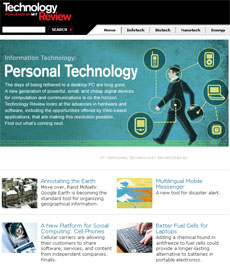
-
MIT's Technology Review reports about Personal technology (to relate with Variable_environment's quick images about Personal environment) and its potential evolution. With topics that interests us such as "Annotating the earth" (Google Earth type of things, to relate with "AR Ready" simple objects based on AR signs/patterns), A New Platform for Social Computing: Cell Phones or The Evolution of Wireless.
Posted by patrick keller at 15:24
Resurgence/revival of the avatar or the "2nd lifes/worlds" kind of questions
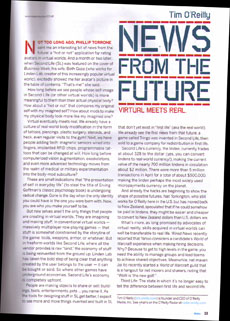
-
In an article published in MAKE Magazine volume 07 ("News from the future" section by Tim O'Reilly), you'll find an interesting short essay about first, second and possibly third life and about yet another mishmash situation (our own body in this case).
-
There is also an interview of Tor Lindstrand on Archinect about Architecture's Second Life and a recent post about Google earth + sketchup by Nicolas Nova on Pasta & Vinegar.
That's a revival! Possibly the first one in the digital era since the arcade/pixel games nostalgia. What about avatars wearing late 90'ies like clothes in 2nd life!?
-
I'm personnaly not a big fan of those kind of "duplicated reality" approaches for 2nd worlds where you should rather face Moore's law than the gravity one. But it's funny to consider that such projects, which were buzz but not working at all 10 years ago (think about the 2nd world of Canal+ where we produced a "digital museum" back in 1999), are now complete buzz again.
It looks like there is definitely a before and an after Google earth, MySpace, 2ndLife, etc. and that the conditions to see a more massive presence of so called "virtual worlds" (and then possibly deeper hybridization between 1st & 2nd) are now joined together (partly because of technical issues but also essentially because those environments are now part of the daily social network).
Posted by patrick keller at 10:44
Avatars consume as much electricity as Brazilians
A del.icio.us link to Rough Type found on Regine's w-m-m-n-a blog. Yet another "mish-mash" (hybrid) situation... (see our mish-mash posts and workshop within the frame of this project).
----------------------------
December 05, 2006
Tony Walsh has, as others do, some doubts about whether Second Life is sustainable as a business. But he also poses another question that I hadn't come across before: "Is Second Life sustainable ecologically?"
He quotes Philip Rosedale, the head of Linden Lab, the company behind the virtual world: "We're running at full power all the time, so we consume an enormous amount of electrical power in co-location facilities [where they house their 4,000 server computers] ... We're running out of power for the square feet of rack space that we've got machines in. We can't for example use [blade] servers right now because they would simply require more electricity than you could get for the floor space they occupy." MORE.
----------------------------
Posted by patrick keller at 15:47
Smart mobs & camera
Tiré du blog *Smart mobs*, quelques lignes sur les caméras de surveillance dans l'espace public:
This USA Today article says that in "U.K. public places, smarter closed-circuit TV cameras have been given the ability to listen for disturbances and also keep an eye on citizens.The system has already been put into use in the Netherlands to listen for people speaking in aggressive tones, to try to counter violent attacks in Dutch streets, prisons and railways.
The aggression detector has been fitted to CCTV cameras on the streets of Groningen and Rotterdam in the Netherlands. In the U.K., London police also are considering installing the system, said Derek van der Vorst, the director of Sound Intelligence, the company that created the technology.The system works by putting microphones in CCTV cameras to continually analyze the sound in the surrounding area. If aggressive tones are picked up, an alarm signal is automatically sent to the police, who can zoom in the camera to the location of the suspect sound and investigate the situation".
-
'Big Brother' cameras listen for fights
Posted by patrick keller at 9:48
Hyperlinking reality
Christophe Guignard sent me this link about a research project lead by Nokia where their goal is to "hyperlink" real environment and super-impose digital information over real-world. Very applied approach where the phone, one more time, is the target and where visual markers are not there.
Read the article on Technology Review.
Researchers at Nokia are also developing a proprietary technology for their phones called MARA software (for Mobile Augmented Reality Applications).
Posted by patrick keller at 17:07
Small Office / Home Office (SOHO) in China
In MARK Magazine no2 (last summer), there is an article explaining that the construction of 'SOHO' housing is booming in China.
'SOHO', for 'Small Office / Home Office' is, has Femke Bijlsma is explaining in Mark "(...) a Japanese term with english roots. More explicitely, sohos are either the homes of people with internet-based work or small internet-related workstations at shared office. A phenomenon of the early '90s, the soho came into its own in 2002 when, for the first time, a housing project in Japan was developed specifically with the Soho in mind. (...) Suppressed for decades, the spirit of enterprise is rampant in a country teeming with entrepreneurs and start-up companies. Sohos in central Beijing are in great demand. The lower floors of these skyscrapers are occupied primarily by eateries, cafés, boutiques and travel agencies, while hair salons, massage parlours and all sorts of small offices fill the higher levels. Late into the evening, these buildings are hotbeds of feverish activity (...)."
-
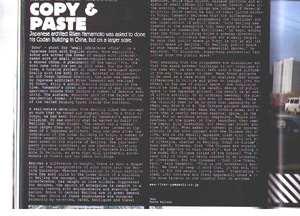
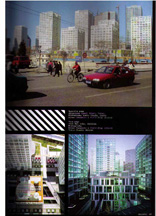
Posted by patrick keller at 18:10
Lighter than air architecture / Bartlett School of Architecture
Within the collaboration with the SWIS laboratory from EPFL (workshop_4), our first projetc idea was to develope a "lighter than air" architecture that would take into account the activities of 3-4 users/people, collaborate with them and activate spatial configurations and/or functions (shelter, lighting system, communication, etc. according to such activities. Due to time constraints, we are working on a reduced projects where swarm robots are still moving in 2d (large table configuration). It seems that the Bartlett school of architecture has the same kind of ideas we had and is starting to work on such a project. Follow the link below (we-make-money-not-art's blog or on interactive architecture dot org's blog as well).
-
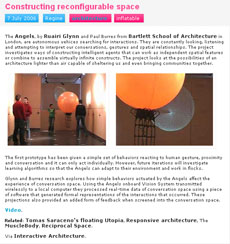
Posted by patrick keller at 14:45
Existing mishmash situations' analysis (workshop Ben Hooker)
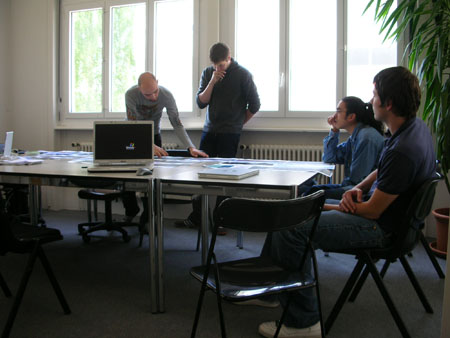
During the first two days of this workshop, a lot of stuff came out.
We discussed about it and inspired each other in different ways.
-
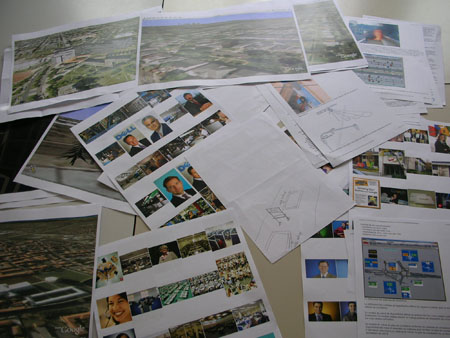
Nicolas was on the RSS feeds and how the information system works.
He was also interrested about the free news paper and the video news in the waiting rooms, the rail station, gaz station etc.
-
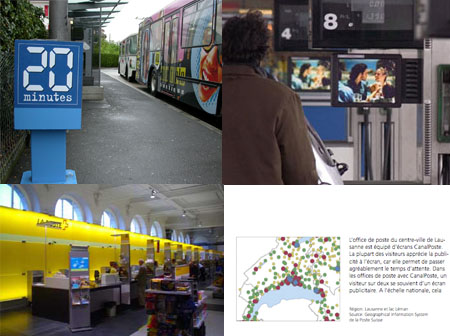
Tatiana, Aude and Bram thought about whats behind compagnies such as Amazon, Ebay or Google.
-
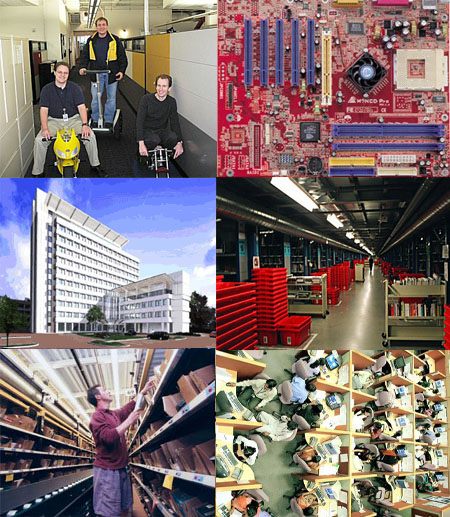
Questions concerning the traffic jam were also mentioned.
How does it work, what's behinf the traffic lamps, what happened if ther is an accident etc.
-
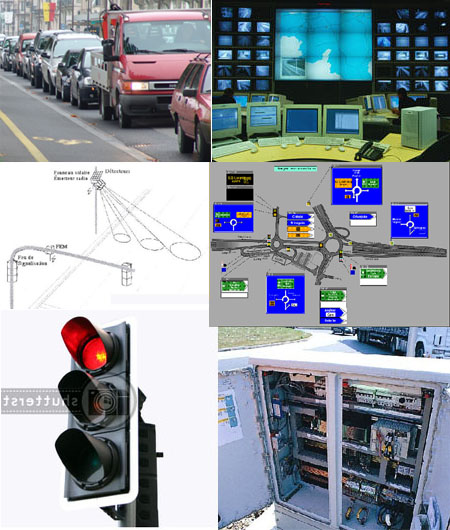
Valerio decide to explore the Google Earth map and discovered some strange results related to the software.
-
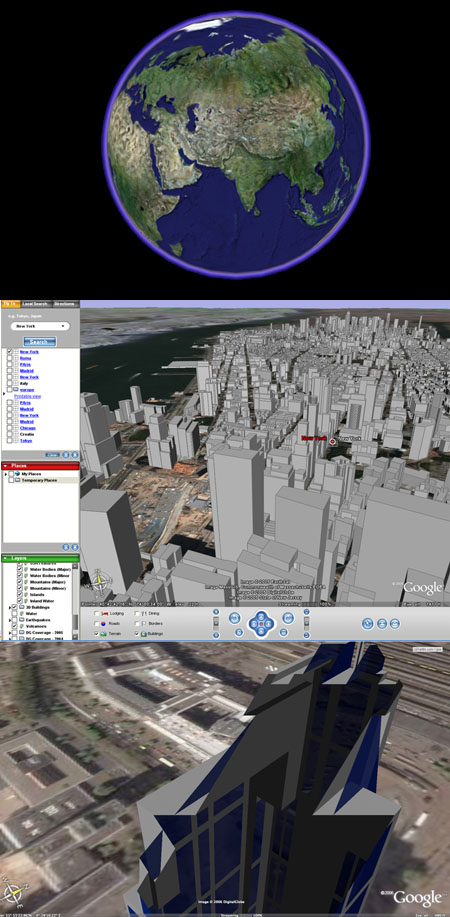
Siméon wanted to work with the indirect light such as TV screens or laptop screens. For example, in the dark, a lot of pepople us their cell phone as a real lamp.
-
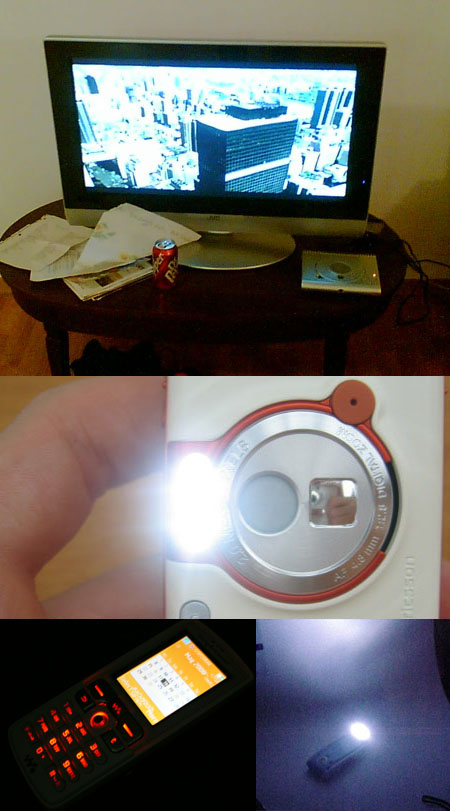
Posted by patrick keller at 15:23
La Suisse, Portrait urbain
A recent publication (La Suisse, Portrait urbain, with contributions by Roger Diener, Jacques Herzog, Marcel Meili, Pierre de Meuron, Christian Schmid) by the ETH Studio Basel, Institute for Contemporary City, treats about the evolution of switzerland and its different regions.
New maps of switzerland are drawn that include wide regions. In particular "Metropolitan regions" that show on a map the concept of regional, urban & peri-urban physical mobility... defining new trans-national territories.
-
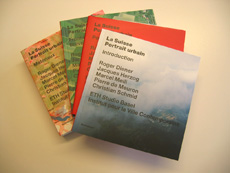
-
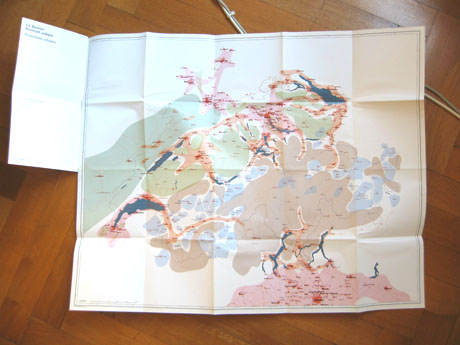
-
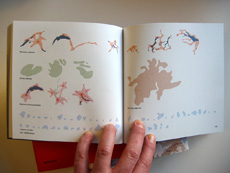
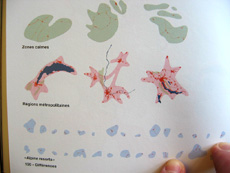
It can be compared to a recent publication by Avenir Suisse, Le feu au Lac, that treats about the same question but centered around Geneva and Lausanne.
An older publication of Avenir Suisse, Urbanscape Switzerland, treated as well about kind of the same questions but with a different and more fictional angle. The book includes pictures by Joël Tettamanti and a prospective project by MVRDV.
Posted by patrick keller at 15:21
Multi devices / "wireless" is "wiremore"
WiFi = Sans Fil
Pourtant, il me semble qu'avec l'arrivée de plus en plus nombreuse d'appareils en tout genre (photo, téléphone, pda, Webcam, lecteur mp3, disque dur, mémoire usb etc.) le WiFi ne résout pas encore le problème des câbles.
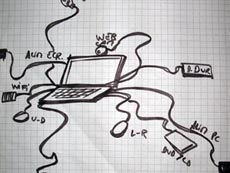
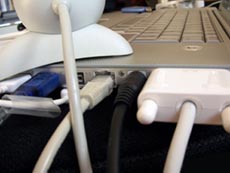

Aujourd'hui, lorsque l'on achète un objet numérique, 2 ou 3 câbles différents (USB, vidéo, audio), un socle qui accueil l'appareil pour la connection avec l'ordinateur ainsi qu'un transfo pour recharger les batteries sont inclus dans le paquet.
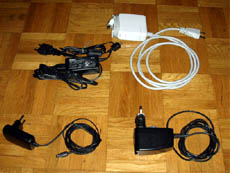
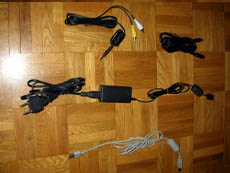
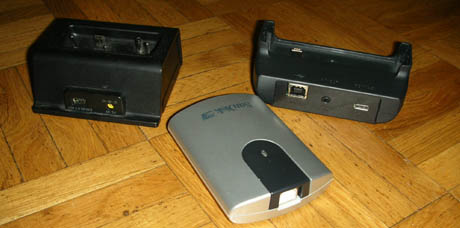
Le transfert des données se fait donc encore en grande majorité à travers des câbles.
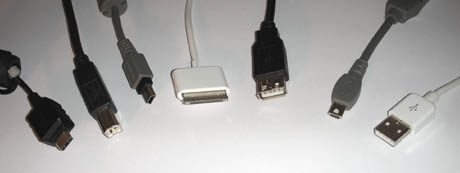
De plus, le nombre de connectiques USB est en constante augmentation et est de plus en plus diversifiée dans leurs formes, un comble pour un système sensé être d'une utilisation universelle.
Chaque embout de câble USB étant plus ou moins différent, on se retrouve avec une multitude de socles, de files et d'appareils divers qui finissent par être très encombrant.
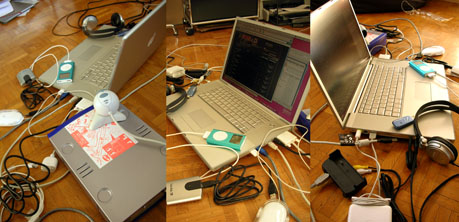
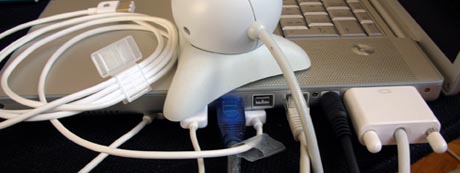
Par conséquent, les ports USB des ordinateurs sont eux aussi de plus en plus nombreux.
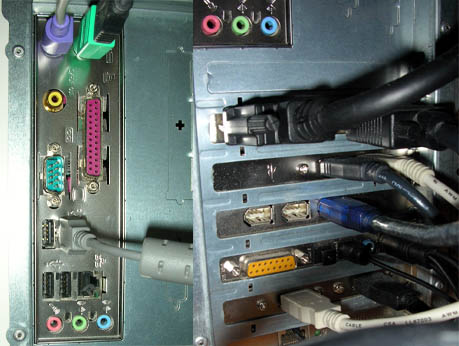
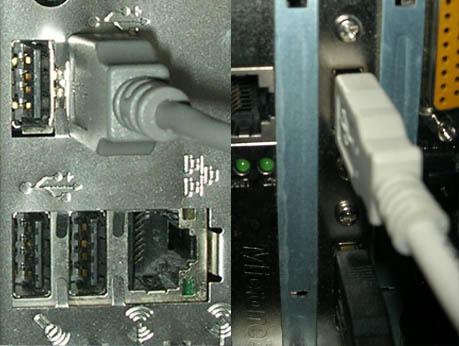
Nous avons donc d'un côté le Wireless - sans fil qui prend de l'ampleur (surtout au niveau du réseau Internet et non de la connection entre les périphériques) mais de l'autre toute la panoplie de câbles USB qui provoque l'effet contraire, c'est à dire une prolifération de câbles.
Par conséquent, lors d'un transport avec un laptop, l'utilisateur reste encore limité dans l'utilisation de ses périphériques via son ordinateur.
Pour une question pratique, il n'aura à disposition que le strict nécessaire, c'est à dire le laptop, le transfo, une batterie en plus, une clef usb et dans certains cas la souris. Tout le reste provoque un surplus de connections inutile et un réel encombrement.
Brancher sa Webcam sur son ordinateur portable dans un environnement en mouvement tel le train n'est pas encore d'une grande utilité.
Brancher son appareil photo numérique ou son lecteur mp3 n'est pas non plus une chose courante, du moins à l'heure actuelle.
Le problème du sans fil n'est donc pas encore résolu, mais certains appareils photo, téléphones ou autre permettent déjà un transfert via Bluetooth.
Cela devra certainement, dans une avenir proche, provoquer encore une fois un changement du comportement de l'individu face aux nouvelles technologies.
Posted by |BRAM| at 13:35
Portable Device Use
Voici quelques petites situations de personnes en mouvement et utilisant leur ordinateur portable.
Ces images ont été prises sur un trajet en train de Lausanne Genève avec accès WiFi.
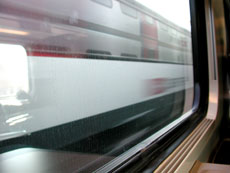
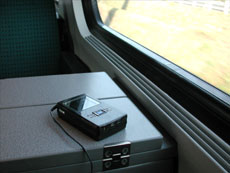
Il est intéressant de noter plusieurs points dont le plus frappant est que les utilisateurs paraissent tout à fait imperturbables à quoi que ce soit tout en étant très nerveux.
L'immersion devant l'écran est fortement visible et elle me semble bien plus importante qu'un lecteur lisant son journal ou qu'une personne écoutant sa musique. Ceci est peut-être dû au fait que l'utilisation d'un laptop sollicite un travail simultané de plusieurs choses (vue, toucher, réflexion, écriture etc.)
Les zones WiFi qui commencent à se répandre un peu partout (moyens de transport, magasins, lieux etc.) renforcent encore un peu plus cette immersion.
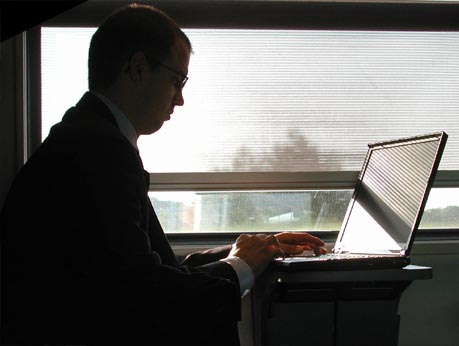
Ces personnes sont dans une bulle complète au point d'en oublier certaines choses fondamentales (alors que la majorité n'utilisent rien de plus que l'application Word!!!).
La plupart des usagers ont le soleil face à l'écran, les reflets ne semblent aucunement les gêner, leur position est inconfortable (tablette trop petite, éloignée du siège etc.). Je suis même tombé un jour sur une personne tapotant nerveusement sur son clavier tout en attendant son bus à l'arrêt en pleine nuit hivernale.
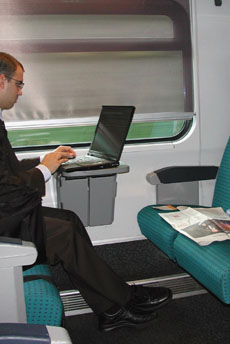
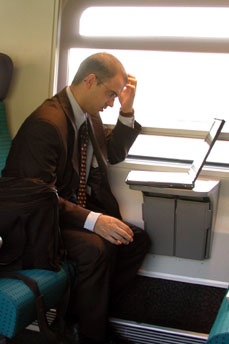
Rien ne semble vraiment les arrêter et ceci simplement dû à leur activité/immersion face à l'écran qui est plus intense que leur activité physique réelle.
Ces personnes paraissent même parfois contrariées à partir de l'instant ou un événement inattendu les extirpe de leur immersion (contrôle des billets, quelqu'un qui les bouscule mégarde etc.)
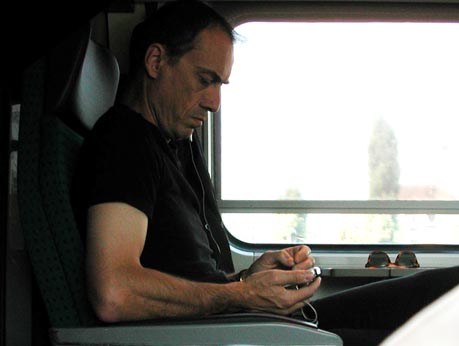

Ici dans un bar, j'ai l'impression que les utilisateurs tentent d'obtenir une place plus confortable qu'ailleurs. Un bar/café/restaurant sont des endroit qui pourraient le plus se rapprocher d'un lieu de travail habituel. Une table, une chaise, un café et une cigarette suffisent en général pour obtenir un petit confort simple.
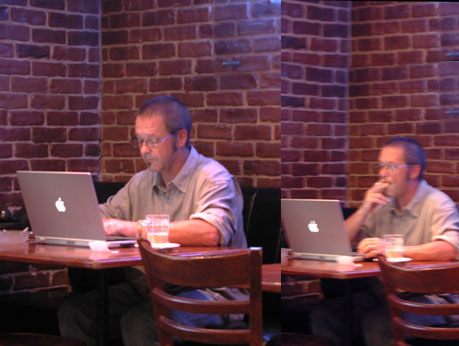
Si aucune table voire aucune chaise n'est a disposition, l'être humain a une incroyable faculté d’adaptation comme j'ai pu le constater à plusieurs reprises. L'ordinateur portable pousse les gens dans un inconfort presque obligatoire car à partir du moment où l'on utilise un laptop hors de la sphère du travail, on doit s'adapter à un autre environnement.
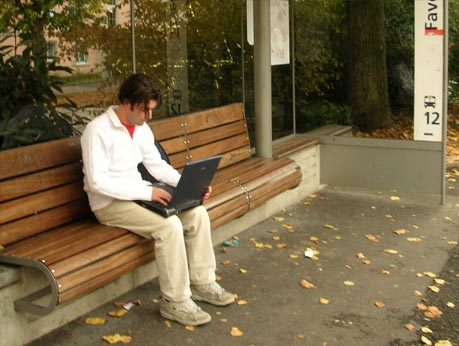
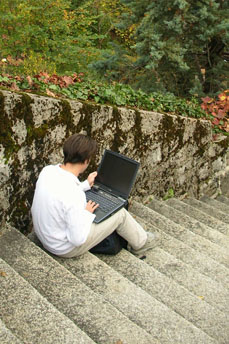
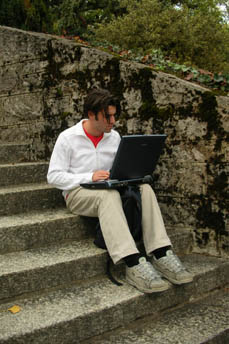
Les zones WiFi modifient considérablement la relation que nous avons avec notre ordinateur. Le fait de pouvoir accéder au Web dans n’importe quelle condition signifie que l'on est atteignable et que l'on peut atteindre quelqu'un à n'importe quel instant, que ce soit par mail, chat ou vidéo conférence.
Ce phénomène constaté depuis l'arrivé du téléphone portable s'amplifie donc considérablement.
Dans ce sens, le téléphone portable n'as de loin pas terminé sa progression. Pouvoir lire ses mails sur cet objet va bientôt devenir une habitude comme c'est déjà le cas au japon. Les premiers téléphones avec lesquels on peut regarder la télévision sont eux déjà disponibles.
Bref, ce petit objet possède gentiment toute les connections possible et nécessaire pour faire la même chose que sur un ordinateur (Web, bluetooth, infra red, usb etc.)
Les zone WiFi devraient donc rapidement s'étendre un peu partout dans l'environnement.
Posted by |BRAM| at 10:36
Libération - Documents sur les caméras de surveillance
Le quotidien français Libération consacre cet été une série d'articles (série Evénements) sur les caméras de surveillance et leur incroyable augmentation dans l'espace public urbain. Bien entendu, ces articles sont en lien directs avec la série d'attentats qui ont récemment touchés le centre de Londres.
-

-
Même si le sujet de *Variable environment/* ne traite pas de cette thématique (la surveillance), cela fait désormais partie de notre environnement urbain quotidien. Une fraction grandissante de l'espace public est filmée, analysée par des logiciels (et des yeux humains), souvent en temps réel. Cette augmentation est rendue possible aujourd'hui par des caméras et des logiciels de surveillance, des bases de données ainsi que d'énorme quantité de stockage d'information.
Le fait que le projet et la technologie AR Toolkit (Augmented Reatity Toolkit) de l'EPFL utilise des techniques d'analyse d'image vidéo en temps réel nous connecte immanquablement à cette famille du *video tracking*. Dans le cadre du projet *Variable environment/*, nous ne l'utilisons pas avec pour but de surveiller, mais cela ne veut pas dire non plus que nous sommes ignorant de la question...
Peut-être faudra-t-il désormais signaler par un message ou une signalétique spécifique l'usage qui est fait des images vues par des caméras (de l'"Espace filmé, surveillé, images enregistrées" en passant par l'"Espace filmé, non surveillé, images non enregistrées" jusqu'à bien entendu l'"Espace non analisé")?
Posted by patrick keller at 12:02
Projets Augmented Reality
Voici une sélection de quelques projets uniquement dédié au thème de la réalité augmentée trouvé sur le site we-make-money-not-art dans la section Augmented Reality.
Portable Augmented Reality

Une sorte de robot qui englobe toute la technologie de l'« Augmented Reality ». Projection, détection, caméra, enceinte sonore, etc.
Plus dans l'idée d'avoir une plateforme pour jouer que pour une utilisation réellement mobile.
Mais dans l'idée d'un objet mobile l'idée serait intéressante.
projet sur we-make-money-not-art
vidéo
A System For Listening To Conversations
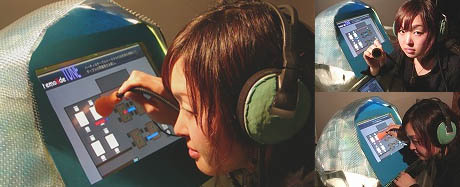
Un système permettant d'écouter la discussion d'un groupe de personnes à distance lors d'une soirée afin de pouvoir s'intégrer dans une conversation avec laquelle on se sent en affinité.
Si ce système était mobile, pas mal de choses pourraient changer, la frontière entre la sphère privée et rapidement franchie, mais l’idée pourrait amener un changement de comportement très fort.
projet sur we-make-money-not-art
vidéo
Ambient Social Networking Interface

Basée sur le même principe que le projet précédent, l’idée ici est de recréer une certaine atmosphère à l’aide d’un halo lumineux sur les personnes. Selon certains paramètres, une personne pourra plus facilement parler à une autre. Chaque individu doit remplir un formulaire avec ses centres d’intérêt avant d’entrer dans la pièce. La personne peut également intervenir sur son halo lumineux pour donner certains signes à d’autres gens de la salle.
projet sur we-make-money-not-art
AR Football On Phone
 Un jeu pour les téléphones et les PDA qui se joue avec son pied.
Un jeu pour les téléphones et les PDA qui se joue avec son pied.
On joue ici à tirer un ballon de foot dans les buts avec son vrai pied qui interagit sur le ballon virtuel du jeu.
projet sur we-make-money-not-art
site officiel
Flat Speakers

Dans la même idée que les écrans plats et maintenant flexibles, nous avons ici des enceintes dans le même esprit. Toujours intéressant pour notre idée d’intervertir la fonction des objets entre eux.
projet sur we-make-money-not-art
Digital Fragrances
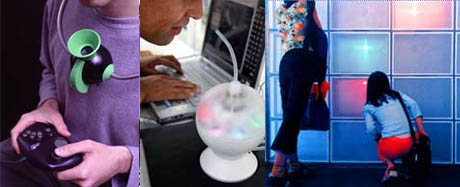
J’avais proposé quelques idées basées sur les odeurs au tout début du projet si je me souviens bien. Bien que très complexe techniquement, des projets de développement proposent cette nouvelle manière de réalité augmentée à travers les odeurs.
projet sur we-make-money-not-art
BattleBoard 3D

Sans lien direct avec la mobilité, mais nous avons ici un projet basé sur le logiciel que nous utilisons, le ARToolkit et les signes de reconnaissances sont ici créé à l’aide de Lego.
projet sur we-make-money-not-art
site officiel
Gossips Wall
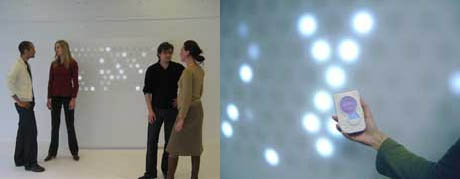
Comme suggéré dans notre univers de chambre d’hôtel et son mur d’information, voici un projet qui propose plus ou moins le même concept à travers des diodes lumineuses reconnues par des téléphones ou autres objets mobiles.
projet sur we-make-money-not-art
site officiel
User Interface For Virtual Butterflies
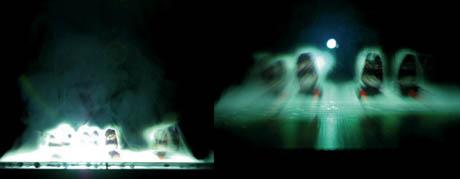
Un projet que j’ai eu l’occasion de voir à plusieurs reprises et que je voulais montrer car ici, la réalité augmentée ne se reproduit plus au travers d’un écran mais se produit réellement dans l’espace grâce à un système de fumée et de projection. La réalité augmentée (des papillons) est difusée sur la fumée, un écran opaque finalement, dans laquelle on peut intervenir avec la main. Les papillons réagissent en fonction.
projet sur we-make-money-not-art
GPS TRON

Un autre jeu qui intervient dans un espace réel grâce au système du GPS. 2 personnes jouent au jeu du film Tron en se déplaçant, leurs mouvements et trajet étant détectés en temps réel par leur module GPS.
projet sur we-make-money-not-art
site officiel
Free Network Visible Network
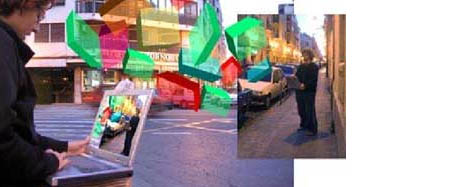
Concept qui consiste ici à montrer visuellement, à l’aide de la réalité augmentée, le transfert de donnée.
projet sur we-make-money-not-art
site officiel
Electrical Human Bodies

Ici il est question d’énergie. L’homme devient une source d’énergie autonome afin de continuellement alimenter ses propres objets électroniques.
Le problème de batterie et de source électrique serait résolu et rendrait la mobilité totalement autonome.
projet sur we-make-money-not-art
As Advertised On T-shirts
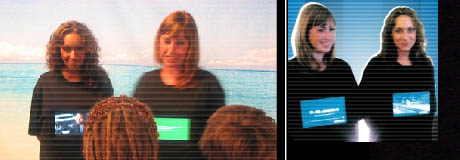
Projet simple qui reproduit des films publicitaires sur un vêtement.
projet sur we-make-money-not-art
site officiel
Posted by |BRAM| at 8:22
Magic cubes
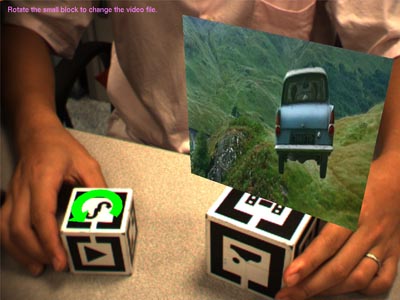
J'ai trouvé sur le site "mixed reality lab" de l'université de singapour une application intéressante de l'idée des cubes dont chaque face est dotée d'un marqueur :
http://155.69.54.110//RESEARCH/MC/MC.webpage/research-MC-infor.htm
Le site présente également d'autres projets de recherches dont certains assez drôles comme le "poultry internet" :
http://155.69.54.110//RESEARCH.HTM
Posted by tatiana at 23:39
Scenario 1
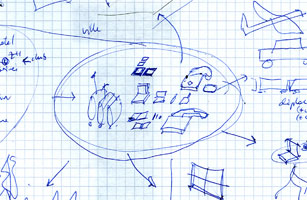
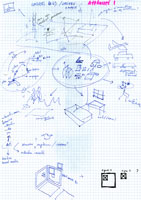
-
Download the scenario 1, a4 size (97k): View image
Posted by patrick keller at 15:07









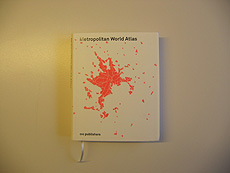
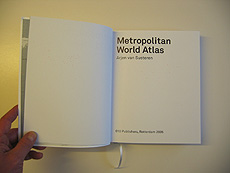
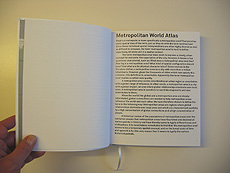
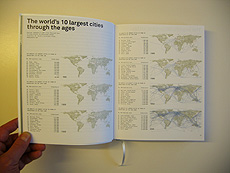
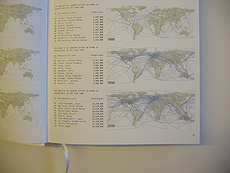
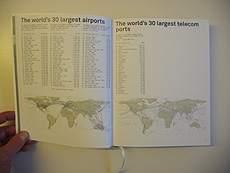
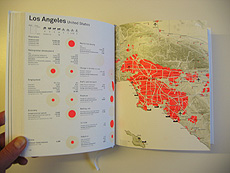








































 Un jeu pour les téléphones et les PDA qui se joue avec son pied.
Un jeu pour les téléphones et les PDA qui se joue avec son pied.









